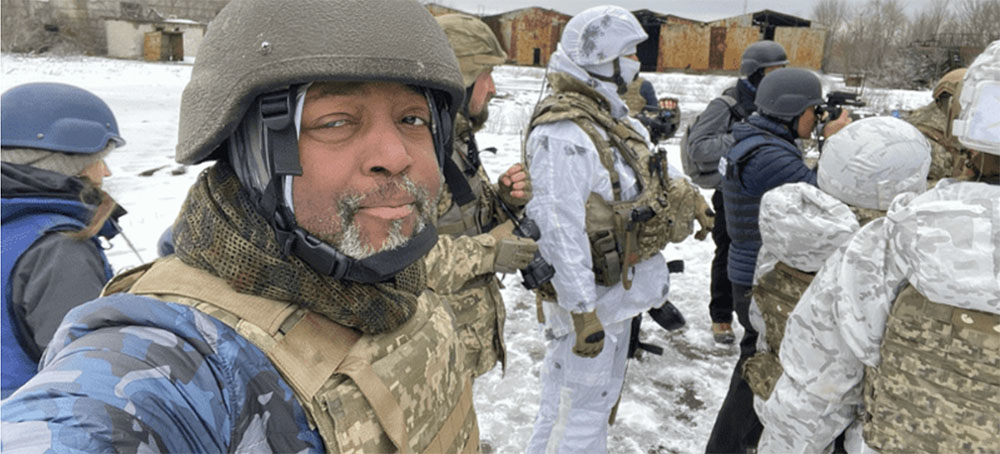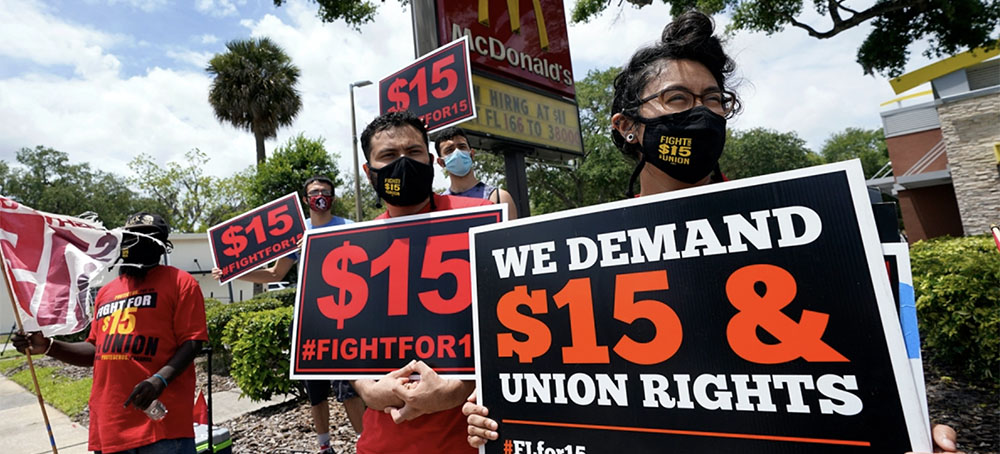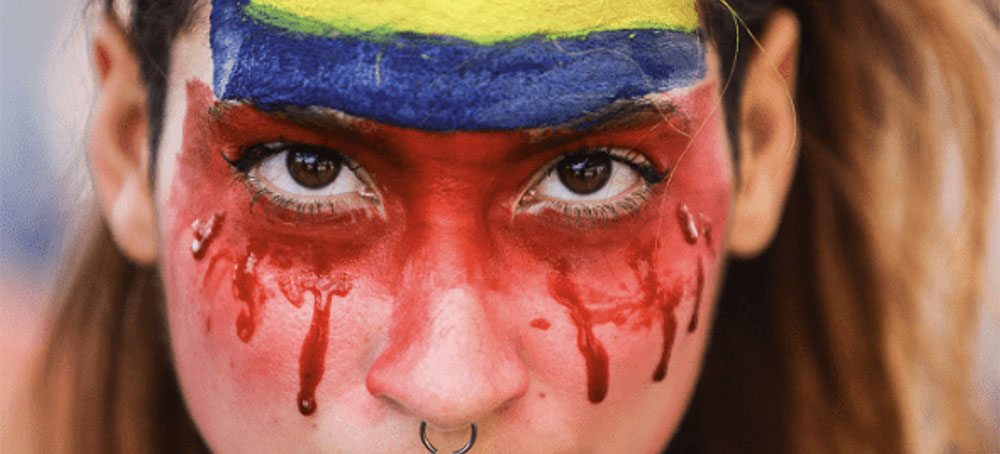If You Never Donate — Come On With It, Please!
In the category of people who can afford make a modest donation but never do lies the answer to all the funding problems this organization will ever have.
If you can afford a modest donation, make it.
That really fixes the donation problems quickly.
With urgency.
Marc Ash
Founder, Reader Supported News
If you would prefer to send a check:
Reader Supported News
PO Box 2043 / Citrus Heights, CA 95611
Follow us on facebook and twitter!
Live on the homepage now!
Reader Supported News
This next phase of the war will differ sharply from the one before it. The flat and empty steppes of the east will make it harder for the Ukrainians to use the hit-and-run tactics that have served them so well until now. Now they have an urgent need for tanks, including first and foremost Soviet-era T-72s (which can be supplied by several of NATO’s former Warsaw Pact member countries), as well as other armored vehicles. They also need long-range artillery amply provided with 152-millimeter and 155-millimeter shells, multiple launch rocket systems (MLRS), air defense systems such as S-300s, anti-ship missiles to defend coastline cities and MiG-29 fighter aircraft. After six weeks of fighting, Ukraine also needs replenishment of every sort of equipment — from helmets to bullets.
President Biden, NATO allies, and a few other partners have delivered a lot of weaponry already. Biden facilitated the transfer of Slovakia’s S-300 air defense systems to Ukraine by agreeing to reposition more modern Patriot surface-to-air systems to protect Bratislava. Other allies have announced pledges to send armored vehicles, anti-ship missile systems and even tanks. These are great achievements.
The Ukrainians don’t only need Soviet-era heavy weapons. They also need more modern and effective weapons from the West, even if soldiers would have to train for their use off the battlefield. As Ukrainian Foreign Minister Dmytro Kuleba has argued, “The more weapons we get, and the sooner they arrive in Ukraine, the more human lives will be saved.”
He’s right. But Western leaders are still concerned about Russian threats of escalation. Western intelligence assessments say that delivering fighter jets, for example, will be unacceptable to Putin. Few in Washington, Berlin, Brussels or London want to escalate this war.
This threat of escalation, however, is cheap talk. Putin is bluffing. He is deliberately allowing the U.S. intelligence community to discover data about escalation in order to scare us away from helping Ukrainians win.
Putin’s first bluff was his scariest. Several weeks ago, he threatened consequences “such as you have never seen in your entire history” against countries that interfered in Ukraine, and vowed to put Russia’s nuclear forces on high alert.
We now know that these words were empty threats, described by NATO Secretary General Jens Stoltenberg as “nuclear saber-rattling.” According to senior Biden officials with whom I’ve spoken personally, it turns out that Putin did not change the alert status of his nuclear forces. A week later, former president Dmitry Medvedev, now deputy head of the Russian Security Council, explained that Russia “reserves the right to use nuclear weapons if it faces an existential threat, even if the other side has not employed nuclear weapons.” No country is threatening to attack, let alone eliminate, Russia.
There is also concern that Moscow might try using tactical nuclear weapons within Ukraine. If faced with defeat, so the argument goes, Putin might be compelled to terrorize Zelensky and Ukrainians into capitulation.
Yet this scenario is also highly unlikely. Crossing this threshold would alienate many counties currently sitting on the sidelines, including first and foremost China. Russia would become even more isolated internationally. Moreover, the use of nuclear weapons would endanger domestic support for the war. Russians do not condone the use of nuclear weapons. Most analysts assume that this second use of nuclear weapons in world history would force Kyiv to surrender. I’m not so sure. The Ukrainians’ cause is just; their will to fight is extraordinary. After a nuclear attack, Ukrainians would be more likely to double down than capitulate, and could even try to take the war to Russia.
Russia has also been making non-nuclear threats. Foreign Minister Sergei Lavrov has said that Russia would see any weapons transports into Ukrainian territory as “fair game.” Deputy foreign minister Sergei Ryabkov similarly commented that Western armaments shipments to Kyiv were “not just a dangerous move” but turned “these convoys into legitimate military targets.”
Yet here, too, there is little substance to the bluster. Russia’s army is struggling mightily in a war against a smaller and lesser-armed Ukrainian army. Under such circumstances, Putin is highly unlikely to attack the largest military alliance in the world, anchored by the most powerful military in the world, the United States. Putin is angry and unhinged, but not suicidal.
Biden and his national security team might have classified intelligence that suggests that these risks of escalation are greater than I can assess through open sources. If not, however, then the free world needs to provide Ukrainians with the quality and quantity of weapons to prevail in Donbas. A Ukrainian win or stalemate in that battle will make us and our NATO allies more secure. A loss will produce the opposite.
 Saudi crown prince Mohammed bin Salman. (photo: Giuseppe Cacace/AFP/Getty Images)
Saudi crown prince Mohammed bin Salman. (photo: Giuseppe Cacace/AFP/Getty Images)
That's according to The Wall Street Journal, which reported that the argument happened last September, when the two men met for the first time since President Joe Biden took office.
Although the crown prince wanted to strike a "relaxed tone" for their meeting, he "ended up shouting at Mr. Sullivan after he raised the 2018 killing of Saudi journalist Jamal Khashoggi," the newspaper reported. "The prince told Mr. Sullivan he never wanted to discuss the matter again," people familiar with the discussion told The Journal. The crown prince also said that the US "could forget about its request to boost oil production."
Khashoggi, 59, a longtime Washington Post columnist known for his criticism of the Saudi kingdom, was assassinated and dismembered at the Saudi Consulate in Istanbul on October 2, 2018, after going there to get paperwork for his upcoming marriage.
The CIA concluded a little over a month later that Prince Mohammed, also known as MBS, had personally ordered Khashoggi's murder.
The Journal's report on Tuesday detailed at length the deterioration of the US's relationship with Saudi Arabia over the last several years. Those divisions have deepened since Russia launched a full-scale, unprovoked invasion in Ukraine in February.
The US and other Western nations have pushed the kingdom to increase its production of crude oil to offset rising oil prices and squeeze Russia's ability to finance its war. But, The Journal reported, Saudi Arabia has refused to do so thus far and its interests remain aligned with Russia's.
 Former MSNBC analyst Malcolm Nance takes a selfie from Ukraine. (photo: MalcolmNance/Twitter)
Former MSNBC analyst Malcolm Nance takes a selfie from Ukraine. (photo: MalcolmNance/Twitter)
 Finnish prime minister Sanna Marin. (photo: John MacDougall/AP)
Finnish prime minister Sanna Marin. (photo: John MacDougall/AP)
 Workers and family members take part in a 15-city walkout to demand $15 per hour wages, on Wednesday, May 19, 2021, in front of a McDonald's restaurant in Sanford, Fla. (photo: John Raoux/AP)
Workers and family members take part in a 15-city walkout to demand $15 per hour wages, on Wednesday, May 19, 2021, in front of a McDonald's restaurant in Sanford, Fla. (photo: John Raoux/AP)
A staggering percentage of employees at the biggest food and retail chains in the United States aren’t making $15 per hour, a new study finds
A new company wage tracker designed by the Economic Policy Institute and the Shift Project took a closer look at 66 of America’s biggest food and retail companies. Some of the results are staggering, and provide a striking window into what it’s like to work at some of the largest chains in America. Dollar General, for instance, pays 92 percent of their workers below $15. McDonald’s is at 89 percent. At both of these companies, more than 1 in 5 workers makes below $10 per hour. These are poverty wages, but they’re sadly the norm, especially in communities where these big chains have driven out other competitors. Dollar General embarked on a nationwide expansion in largely underserved rural communities, filling the gaps wherever communities weren’t dominated by local Walmarts (where 51 percent of workers make under $15 per hour, and 91 percent make under $20 per hour).
The tracker itself is public, and allows you to compare the percentages of employees who make below certain thresholds at each of the companies. Rolling Stone’s analysis of the data shows that only 22 of the 66 companies listed pay 50 percent or more of their employees more than $15 per hour. The other 44 companies pay the majority of their workers less. The $15 minimum wage has been shot down in Congress multiple times thanks to Democratic incompetence and Republican obstinance, but it is still widely recognized as the bare minimum for workers living in today’s society.
Workers across the country have attempted to organize in various ways to bring about this change themselves, most prominently through the Fight for $15 campaign and the new wave of unionization that has targeted some of the biggest firms on this list. At Starbucks, for instance, where 63 percent of workers make under $15 per hour, individual stores are consistently voting to unionize with the independent Starbucks Workers United. The company has responded with ruthless union-busting, firing at least 18 pro-union workers since February, according to new reporting by Vice News. But at chains with even worse wages, like McDonald’s and Dollar General, relentless turnover prevents workers from building union movements. A pre-pandemic study found that workers were twice as likely to quit when they were paid the federal minimum wage of $7.25 per hour.
Some companies, like Amazon and its subsidiaries, have self-imposed large minimum wage hikes, bringing almost all of their workers to above $15 per hour. This may seem like altruism, but it’s actually a calculated decision in order to weaken the overall goals of employees seeking to unionize. It’s a good reminder that even $15 an hour doesn’t solve the inherent exploitation that the major chains on this list depend on to pump up their profit margins. It only forces them to extract more from their workers through other means, like Amazon’s punishing productivity quotas.
If you need this point driven home any further, click on any of the companies in the tracker and take a quick look at the “Revenue” and “CEO Pay” lines. The latter is always a lot more than $15 per hour.
 A citizen during a protest against the assassination of social leaders in Colombia. (photo: Twitter/lideresSC)
A citizen during a protest against the assassination of social leaders in Colombia. (photo: Twitter/lideresSC)
 Insecticide sprayed on bell pepper fields in Florida. Marginalized communities are at a higher rate of exposure in the workplace and at home, the study found. (photo: Alamy)
Insecticide sprayed on bell pepper fields in Florida. Marginalized communities are at a higher rate of exposure in the workplace and at home, the study found. (photo: Alamy)
Hispanic and Latino farmworkers at high risk from pesticide use in agriculture, while people in lower-income housing also affected
Roughly 90% of pesticide use in the US is in agriculture, making farmworkers – 83% of whom identify as Hispanic – more vulnerable to the synthetic chemicals intended to kill, repel or control pests.
“These workers somehow are seen as expendable,” said Robert Bullard, a co-author of the report and the director of the Bullard Center for Environmental and Climate Justice at Texas Southern University. “This study shows the systemic neglect that [led to] a whole workforce being an underclass and not given the same weight when it comes to health and safety.”
The study reviewed CDC and EPA data, along with existing pesticide research, and found that structural injustices, gaps in regulation and weak farmworker protections have led to disproportionate exposure to pesticides among people of color. It was conducted by the Center for Biological Diversity; researchers from Historically Black Colleges and Universities; and advocates from farmworker, racial justice and conservation groups.
Twelve out of 14 markers for harmful pesticides, tracked over the past 20 years, were found in the blood and urine of Black and Mexican Americans at levels up to five times higher than those found in white Americans.
Pesticide safety laws in place today by the Environmental Protection Agency set standards for pesticide exposure among consumers through food, but they specifically exclude farmworker protection from occupational exposure. “Laws and regulatory practices that we have in place right now are really perpetuating this,” said Nathan Donley, environmental health science director at the Center for Biological Diversity and co-author of the report.
Jeannie Economos, pesticide safety and environmental health project coordinator at the Farmworker Association of Florida, said: “We need to get rid of these pesticides and find alternatives. They’re not only poisoning farmworkers, they are in our groundwater, on our food, and depleting our soil.”
Marginalized communities are at a higher rate of exposure both in the workplace and at home, whether due to proximity to a pesticide manufacturing plant or from use inside residences.
In California, Louisiana, Georgia, South Carolina, Tennessee, Arkansas and Missouri, people of color make up about 38% of the population. But that same group comprises 63% of the population living within a mile of one of 31 pesticide facilities that, as of November, the EPA deemed in “significant violation” of environmental laws such as the Clean Air Act and Clean Water Act.
The study also shows that pesticide use against rodents and cockroaches is often high in lower-income housing, due to age of buildings, poor maintenance and often crowded living conditions. In New York state, according to a study from 2002, 80% of low-income public housing facilities regularly applied pesticide. In another study from that year, 30% of pregnant African American and Dominican women in New York City were found to have at least eight pesticides detected in a home air-monitoring study.
Bullard said the problem extends to not only federally subsidized housing, but also rental units in large complexes occupied by “renters who have no control over how much pesticide is being used and the safety applied”.
Exposure to pesticides has been shown to negatively affect children’s development, and can lead to learning disabilities and behavioral problems.
In November, Senator Cory Booker introduced the Protect America’s Children from Toxic Pesticides Act, which would ban some of the most damaging pesticides, including neonicotinoids, which are banned in the European Union and significantly restricted in Canada. More than 350 organizations that use pesticides, including agricultural groups and golfing associations, sent a letter to Congress in opposition to the bill.
Special Coverage: Ukraine, A Historic Resistance
READ MORE
Follow us on facebook and twitter!
PO Box 2043 / Citrus Heights, CA 95611




No comments:
Post a Comment
Note: Only a member of this blog may post a comment.